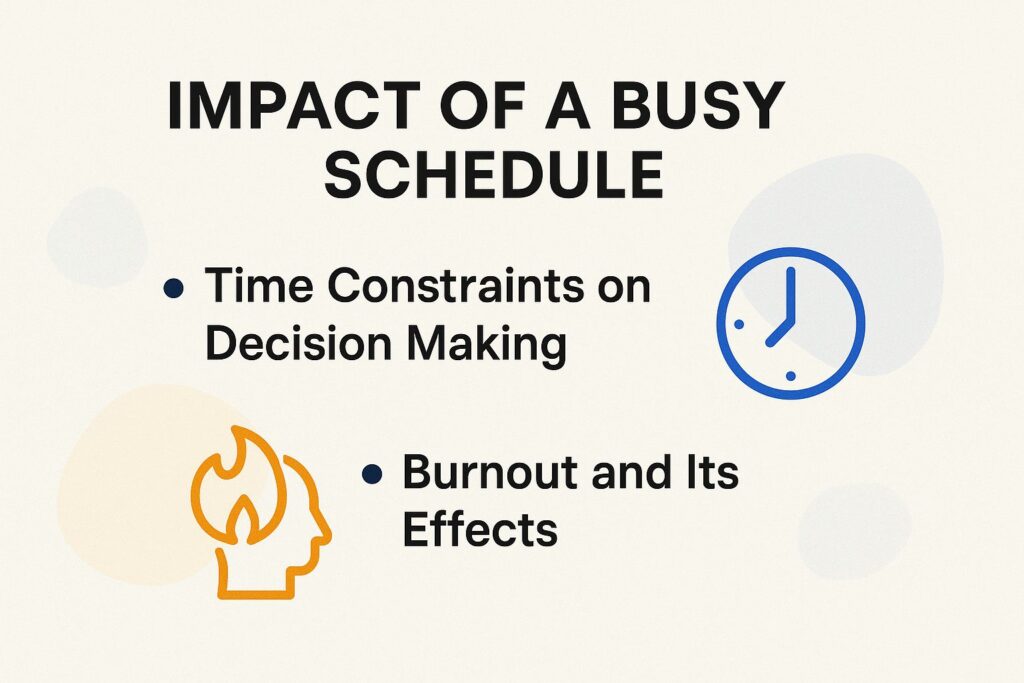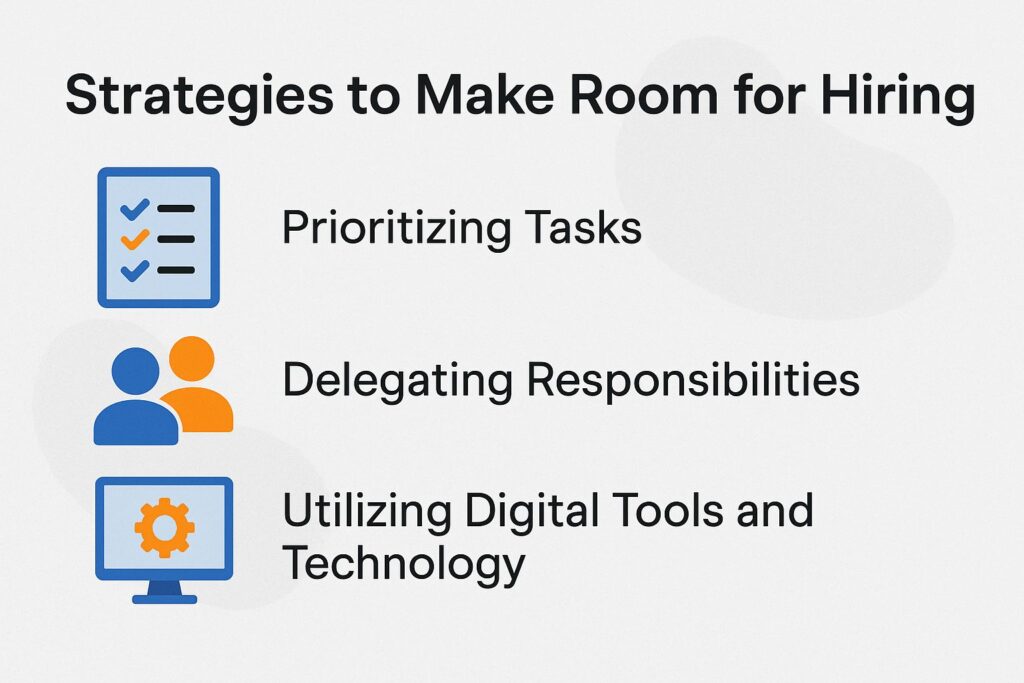
Why Hiring Always Feels Impossible (and How to Make Room in Your Schedule)
Hiring shouldn’t feel like an impossible puzzle, yet here you are, overwhelmed and frustrated. You’re not alone-many struggle with the constant pressure of finding the right talent while juggling a packed schedule. This piece dives into why hiring is so challenging, from misconceptions to time constraints. You’ll find useful methods to free up time in your schedule and make the workflow easier. Ready to turn hiring from a headache into a manageable task? Let’s dive in!
The Challenge of Hiring
Many employers find it hard to hire skilled candidates. Nearly 70% of them have trouble finding qualified workers in the current job market.
This challenge is exacerbated by increased competition and rising candidate expectations. Candidates now often prioritize flexible work arrangements, such as remote work options, while companies find it challenging to meet these needs.
Using platforms like LinkedIn and Glassdoor can help you understand what candidates like. Using tools like Trustpilot can improve your reputation, making your company more appealing.
By refining your recruitment strategy to address these workplace efficiency challenges, you can improve your hiring outcomes significantly through effective resource allocation.
Purpose of the Hiring Strategy Outline
This hiring strategy outline is designed to give you a complete overview of the talent acquisition process and offer practical tips to improve your recruitment marketing efforts.
- To strengthen your recruitment strategy, focus on defining clear job descriptions that outline essential skills and experience.
- Use tools like LinkedIn Recruiter to find specific candidate profiles, and apply an Applicant Tracking System (ATS) like Greenhouse to make managing candidates easier.
- Consider incorporating structured interviews, which have been shown to improve hiring outcomes by 30%. Engage your team in the evaluation process to create a well-rounded view of each candidate, ensuring alignment with your company culture and values.
Understanding the Hiring Process

Grasping the details of improving the hiring process is key to reducing the time it takes to hire and enhancing the candidate’s experience by scheduling well and managing time effectively.Related insight: How Much Does HR Cost Per Employee?
Common Misconceptions
Many businesses mistakenly think that spending extra time on choosing candidates leads to better hires. However, it often causes them to miss out on potential employees because of poor time management.
Speeding up hiring can lead to quicker and just as good outcomes, boosting work output and improving decision-making speed.
For instance, implementing an initial screening call can help identify candidate fit quickly. Tools like Greenhouse or Lever help simplify task management and reduce time spent on administrative duties.
Consider setting a decisive timeline-ideally within 30 days. This means setting up interviews quickly and giving feedback to candidates without delay.
Quick replies keep candidates engaged and improve the company’s reputation, drawing in talented people.
Stages of Hiring
The hiring process typically consists of five key stages: Planning, Sourcing, Screening, Interviewing, and Onboarding, each critical for effective candidate sourcing and onboarding experience.
- During the Planning stage, define the role requirements and create a job description that reflects your company culture and organizational culture.
- In the Sourcing phase, use networking platforms like LinkedIn and Glassdoor for targeted outreach to potential candidates.
- After sourcing, move to Screening; use tools such as Applicant Tracking Systems (ATS) like Greenhouse to filter resumes effectively.
- In the Interviewing stage, prepare structured questions focusing on skills and cultural fit.
- For Onboarding, develop a thorough orientation program to help new employees adjust quickly.
Clearly sharing information and providing feedback at each stage helps make the candidate selection process smoother and keeps candidates interested.
Time Investment in Hiring
On average, organizations spend about 23 hours per hire, with significant variations depending on the position, job requirements, and industry trends.
To simplify this process, carefully examine each step of the hiring stages. For example, set aside 5 hours to write a job description that clearly states what is expected.
Spend about 10 hours looking over resumes using application tracking systems (ATS) like Greenhouse or Lever, which can make it simpler to screen and assess candidates.
Budget 6-8 hours for interviews, employing structured formats for consistency. Managing these aspects well cuts down on time and raises the chance of finding a suitable match for your organization.
Factors Contributing to Hiring Difficulties

Various elements continue to complicate talent acquisition, affecting how companies find and retain talented employees for better job satisfaction and employee retention. Evaluating whether the HR department is hindering or helping company growth can shed light on these complexities (our in-depth analysis offers valuable insights).
High Competition for Talent
With low unemployment, businesses are trying hard to hire experienced workers, especially in tech and healthcare.
To draw the best candidates, companies need to improve their hiring methods. This includes offering competitive salary packages-research shows that tech roles now command up to 20% higher salaries than pre-pandemic levels.
Offering flexible scheduling and work options can make a big difference; 70% of people looking for jobs want remote work choices.
Using platforms like LinkedIn for focused hiring can improve visibility with possible candidates.
Reducing the number of interviews can significantly improve the experience for candidates and make your organization more appealing to them.
Unrealistic Expectations
Employers often set unrealistic expectations regarding candidate qualifications and skill gaps, hindering the recruitment process and causing talent shortages.
To attract qualified candidates, employers should focus on setting realistic job descriptions. Start by analyzing the essential skills and experiences genuinely required for the role; rather than using industry jargon or overly strict qualifications, strive for clarity.
For example, instead of writing ’10 years of experience with all parts of project management,’ use ‘5 years of relevant experience with a history of successfully leading teams.’ Emphasize the importance of people skills by mentioning qualities like flexibility or teamwork.
Tools like Job Description AI can improve descriptions to clearly show actual job needs, helping manage expectations.
Lack of Resources
Many companies struggle with inadequate recruitment resources, which can lead to longer hiring times and lower quality hires.
To improve hiring without raising expenses, try using free online tools. Use platforms like LinkedIn for targeted outreach and EngageBay for free CRM capabilities.
Make your job postings more visible on Google for Jobs without extra cost. Implement an employee referral program, incentivizing current staff to recommend candidates; this often leads to faster hires.
Defining specific job qualifications and getting your interview team ready can lead to better candidates, even with limited resources, by using resources wisely and focusing on team cooperation.
Impact of a Busy Schedule

Hectic schedules can negatively affect hiring, causing hurried choices and possible mistakes when selecting candidates.
Time Constraints on Decision Making
Time constraints can lead to hasty hiring decisions, with studies indicating that 30% of hires are regretted within the first year, highlighting the importance of efficient priority management and time allocation.
To reduce these risks, create an efficient hiring process. Begin by creating a standardized job description that outlines essential qualifications and skills.
Use tools like Applicant Tracking Systems (ATS) to quickly sort through candidates. Use the same set of questions in interviews to make it easier to compare candidates.
Set a timeline that allows for thorough reference checks and second-round interviews, ensuring a well-rounded evaluation. By focusing on these strategies, you can make informed choices while managing tight schedules.
Burnout and Its Effects
Recruiters experiencing burnout are less effective, resulting in a 50% decrease in candidate engagement and a negative impact on hiring outcomes, affecting productivity and performance metrics.
To stop recruiters from getting overwhelmed, it’s important to use sensible methods.
- First, maintain a balanced workload by distributing tasks evenly among team members, ensuring that no single recruiter is overwhelmed.
- Second, include regular breaks in your day; even brief pauses can improve concentration and lower stress.
- Third, use technology like Applicant Tracking Systems (ATS) to handle repetitive tasks, reducing administrative work.
Create a supportive environment where people can talk openly about their workload and stress. This can greatly improve morale and productivity.
Strategies to Make Room for Hiring

Using planned methods can help organizations focus on hiring and make the process simpler, making hiring more efficient.
Prioritizing Tasks
Utilizing priority management methods like the Eisenhower Matrix can help prioritize hiring tasks, ensuring that urgent and important actions are prioritized effectively for better time management.
To implement this priority management, start by categorizing tasks into four quadrants: urgent and important, important but not urgent, urgent but not important, and neither.
For example, scheduling interviews falls into ‘urgent and important,’ while updating job descriptions and role clarity may be ‘important but not urgent.’
Use tools like Trello or Asana to visually manage these tasks, allowing your team to collaborate on priorities easily.
Organize weekly meetings to refocus on current priorities for better performance, ensuring that essential hiring tasks are consistently addressed.
Delegating Responsibilities
Effective delegation can speed up the hiring process, letting team leaders concentrate on important decisions instead of paperwork.
To make the most of delegation, think about assigning tasks such as reviewing resumes, doing first phone interviews, and handling scheduling details.
By assigning these tasks to an HR assistant, hiring managers can concentrate on evaluating candidates’ skills and their fit with the company culture, while dealing with recruitment issues and enhancing work-life balance.
Using tools like Trello for task management can make the process simpler. This approach speeds up hiring and improves the quality of new employees by allowing leaders to focus on important evaluations instead of being distracted by small details.
Utilizing Digital Tools and Technology
Using technology like applicant tracking systems, such as Greenhouse ($6,000/year) or Lever ($3,000/year), can simplify the hiring process and improve candidate management, making the workflow more efficient and enhancing evaluation methods.
These tools make recruitment more efficient by using software to handle repetitive tasks such as resume sorting, shortlisting, and setting up interviews.
Greenhouse provides powerful tools to identify where hiring processes stall, whereas Lever’s collaboration features simplify feedback sharing among team members, improving employee involvement and communication.
You can use Crystal Knows ($29/month) to improve your communication with candidates by learning about their personalities, making communication more effective and enhancing your interview methods.
By using these technologies, companies can greatly shorten hiring times and improve candidate experiences, leading to better talent acquisition results and addressing hiring challenges.
Building a Detailed Hiring Plan and Structure

A clear hiring plan sets specific goals and methods to make sure they match the company’s main goals and workforce planning strategies. For a deeper understanding of how these strategies can impact financial decisions, explore our insights into HR cost per employee.
Setting Clear Objectives
Setting clear hiring objectives, such as filling key positions within 60 days, helps measure success and prioritize efforts, ensuring a strong value proposition for new hires.
For example, if your company wants to increase sales by 20% with new employees, you could set clear goals like using job market analysis:
- ‘Hire three sales representatives by the end of Q2’
- ‘Achieve a candidate acquisition rate of at least 10 qualified applicants per position.’
Using tools like LinkedIn Recruiter for specific outreach can improve your work, while using a tracking system like Greenhouse will help you stay on track with your goals. Regularly checking progress keeps you on track with your business goals.
Defining Clear Roles and Responsibilities
Setting clear responsibilities for the hiring team promotes accountability, transparency, and team cohesion during recruitment.
Begin by assigning specific responsibilities to each team member. For instance, the Hiring Manager is responsible for defining the role requirements and leading the interviews.
The Recruiter focuses on sourcing candidates and managing the application process. Meanwhile, a Technical Lead can evaluate candidates’ skills, particularly for specialized positions.
Meetings should be held regularly to plan work and make sure everyone’s opinions are heard. This method makes decision-making easier and encourages teamwork, resulting in improved hiring choices.
Recap of Key Points and Strategies
We have looked into the problems and methods connected to hiring, emphasizing how important good planning and using resources well are for effective workforce planning and addressing recruitment challenges.
To make hiring easier, begin by writing clear job descriptions that detail the necessary skills and responsibilities, ensuring you accurately assess the job market.
Use tools like Greenhouse or Lever to keep track of job applicants. These tools help with keeping everything organized and staying in touch.
Implement a structured interview process-consider using the STAR method (Situation, Task, Action, Result) to assess candidates’ past performance effectively, preparing for interview techniques.
Regularly review your hiring processes and adjust them based on feedback and results. Use hiring metrics to continually improve them.
Encouragement to Take Proactive Action
Now is the time to implement these strategies to strengthen your hiring process and attract top talent, ensuring career growth and mentorship opportunities.
Start by refining your job descriptions. Use clear, concise language and highlight key responsibilities along with the skills necessary for success. Tools like Jobscan can help improve your postings for search engines.
Next, use social media platforms like LinkedIn to advertise job openings and reach out to potential candidates, keeping the candidate pipeline active.
Think about using an applicant tracking system (ATS) such as Greenhouse to simplify the application process, ensuring efficient management and addressing availability and work overload.
Use structured interviews to assess candidates fairly, helping you see how well they fit with the team, supporting effective onboarding processes.
Additional Resources for Improved Hiring Strategies
Check out these extra resources to improve your hiring plans and keep up with industry trends.
Consider following industry-leading blogs such as SHRM, which offers a wealth of articles on best practices, and reThink, focusing on innovative hiring approaches and workplace diversity.
One of the biggest reasons hiring feels impossible is because it demands time you don’t have. Reviewing résumés, scheduling interviews, checking references, and keeping up with compliance rules isn’t just time-consuming—it pulls you away from running your business. For many owners, that means hiring stays at the bottom of the to-do list, even when it’s desperately needed.
This is where an HR management service becomes a game-changer. Instead of juggling every step yourself, you can hand off the entire process to professionals who specialize in recruiting and onboarding. They’ll handle the candidate search, coordinate interviews, and ensure all paperwork is compliant with state and federal regulations. You stay in control of the final hiring decision, but you no longer have to lose hours to administrative tasks.
About the Author
Ethan Cole is a business growth advisor and serial entrepreneur with over two decades of hands-on experience helping startups and small businesses thrive. With a background in finance and operations, he’s led multiple companies from early-stage concepts to multi-million-dollar exits. Ethan specializes in scaling strategies, cost reduction, and building systems that support sustainable growth. As a content contributor for Kwote Advisor, he shares practical insights to help business owners make smarter decisions when launching, managing, and expanding their ventures.



